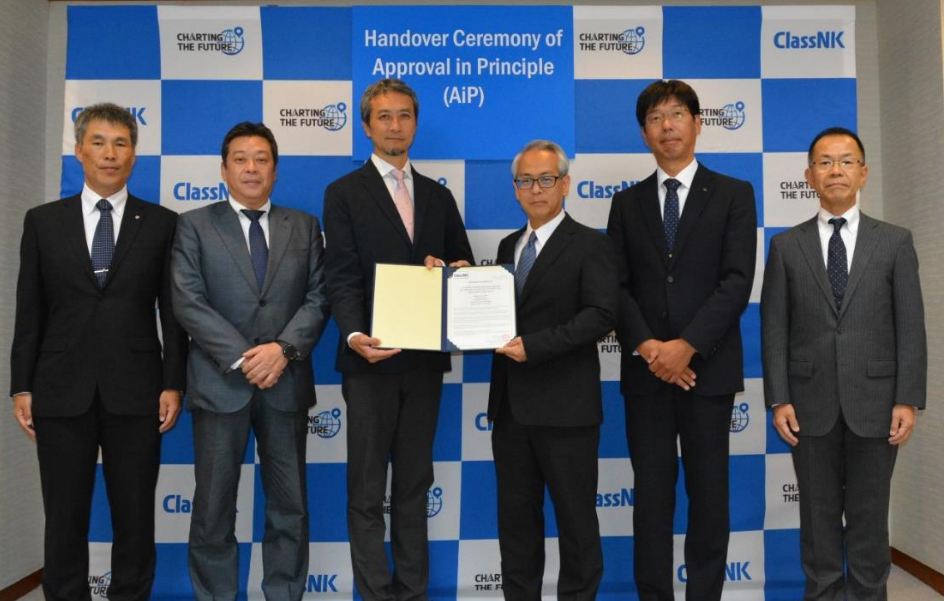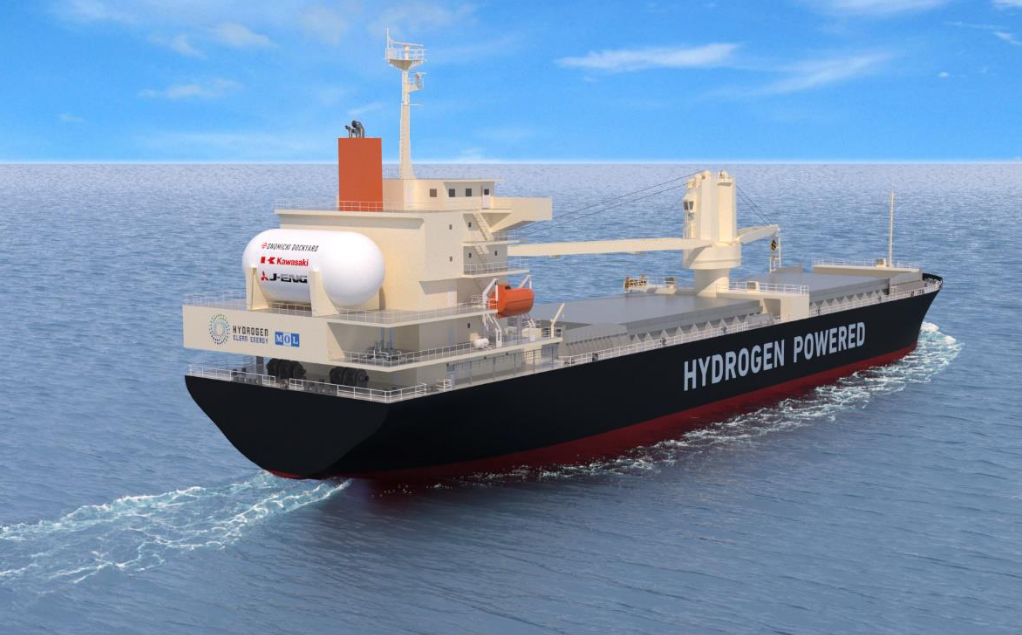
Mitsui O.S.K Lines, Ltd. (MOL), in collaboration with MOL Drybulk, Ltd., Onomichi Dockyard Co., Ltd., Kawasaki Heavy Industries, Ltd. (Kawasaki), and Japan Engine Corporation (J-ENG), has achieved a significant milestone. The consortium conducted a comprehensive risk assessment of a Multi-Purpose Vessel powered by hydrogen, a zero-emission fuel. This endeavor has earned them the coveted Approval in Principle (AiP) for the parcel layout concept from Nippon Kaiji Kyokai (ClassNK).
What sets this achievement apart is that it marks the world’s first AiP certification for a ship equipped with a low-speed two-stroke hydrogen-fueled engine as its primary propulsion source. The vessel, with a deadweight of 17,500 metric tons, stands as a beacon of innovation in the maritime industry.
The next phase of this visionary project entails a two-year demonstration operation scheduled to commence around FY2027. This demonstration is a pivotal part of the “Development of marine hydrogen engines and MHFS” initiative, which received funding from the Green Innovation Funding Program of the New Energy and Industrial Technology Development Organization (NEDO).

By FY2026, J-ENG’s large low-speed two-stroke hydrogen-fueled engine, along with Kawasaki’s Marine Hydrogen Fuel System (MHFS), will be integrated into the vessel. MOL and MOL Drybulk will take charge of the vessel’s ownership and operational management, while Onomichi Dockyard will spearhead the vessel’s development and construction.
A crucial step in this journey was the Pre-HAZID meeting held on June 28-29, 2023, with the participation of ClassNK and the National Maritime Research Institute. During this meeting, risks and considerations related to the parcel layout concept of the liquefied hydrogen fuel tank and fuel supply system were meticulously examined. The conclusion drawn was that the vessel’s design can progress based on the existing parcel layout.
This momentous collaboration between MOL, MOL Drybulk, Onomichi Dockyard, Kawasaki, and J-ENG bears testament to their dedication towards reducing Greenhouse Gas (GHG) emissions in the maritime sector. Their collective efforts align with the goal of achieving carbon neutrality by 2050, underscoring the pivotal role that sustainable shipping plays in our global future.

